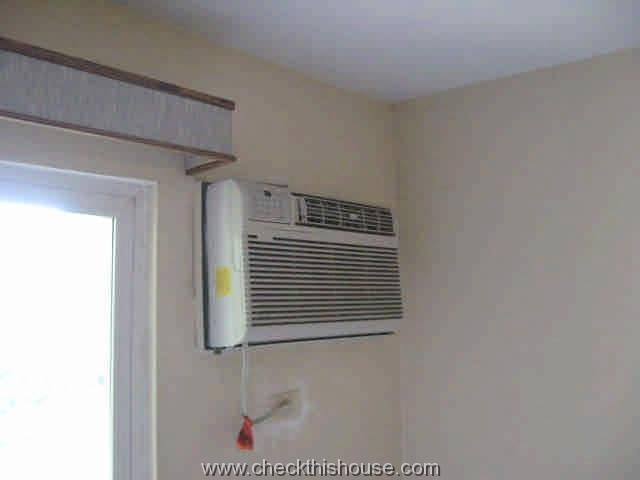
Air conditioning wall units are typically installed inside the metal sleeves, permanently secured to the building wall structure. In most instances, they only require regular maintenance procedures like filter replacement, and cleaning, which should be performed on regular basis.

Because wall units should discharge condensate (condensation that builds up on the coil, inside the air conditioning unit enclosure) behind the sleeve / to the house exterior – proper slope of the installed sleeve, and air conditioner positioning inside the sleeve are very important.
The exterior section has to be slightly lower than interior to prevent condensate from dripping inside the property. Sometimes with older, corroded sleeves, air conditioning wall unit condensate will leak in-between the wall.
- Lack of discharge on exterior during unit operation &
- Moisture stains on interior or exterior wall
should be further investigated (lack of discharge might be also caused by undercharged, or not operating AC compressor.
If this is the case, set the unit to fan only position, turn it “ON”, and after listening of the fan sound for a few seconds, switch to AC position, if the compressor is functional (not necessarily cooling), you should hear significant noise increase.

Deteriorated seals (usually caulking or silicon) around the sleeve at structure wall penetration (exterior), and AC units poorly insulated for cold season, are often responsible for interior wall damage around the sleeve / AC unit, in which case they should be serviced.
Sometimes, sleeve installation was improperly performed from the beginning, and the only way to avoid problems is to completely re-install AC wall unit sleeve.


Comments are closed.